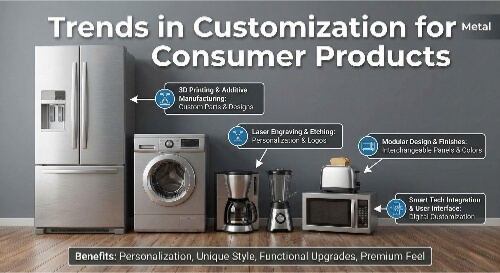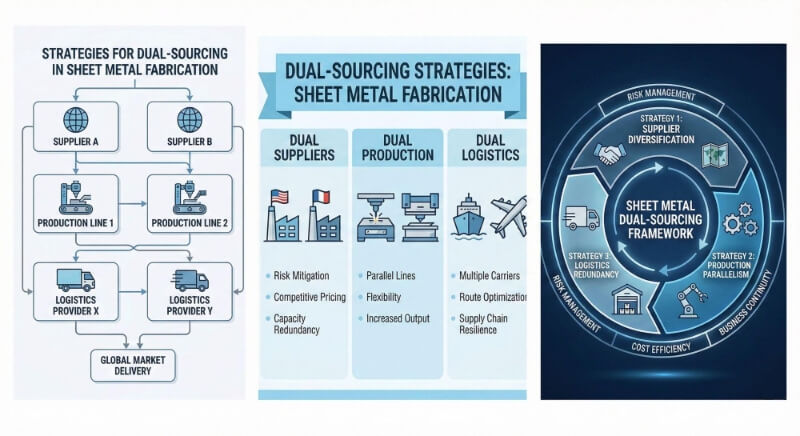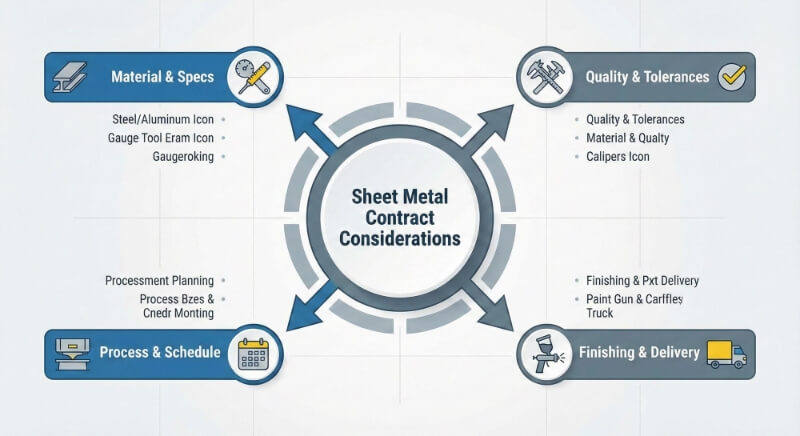يحتاج العديد من المصنعين والمهندسين إلى طرق جديدة لربط الأجزاء. يمكن أن تسبب الطرق التقليدية، مثل اللحام والبراغي، مشاكل مثل زيادة الوزن أو تلف المواد. يعمل الربط اللاصق على تغيير طريقة ربط الأجزاء المختلفة. يمكن أن يحل هذه المشاكل من خلال تقديم طريقة أنظف وأسرع وأكثر مرونة.
يمنح الربط اللاصق المهندسين وصانعي المنتجات خيارات جديدة. يمكن لهذه الطريقة تقليل الوزن، وتحسين المظهر، والمساعدة في ربط المواد الصلبة. استمر في القراءة لمعرفة كيف يمكن للربط اللاصق أن يساعد مشاريعك.
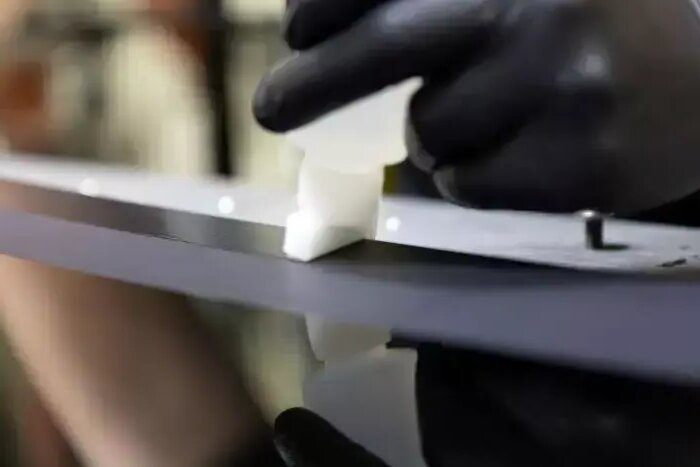
ما هو الربط اللاصق?
الربط اللاصق هو عملية ربط تستخدم مادة، عادةً ما تكون سائلة أو معجون، لإلصاق سطحين معاً. تسمى المادة بالمادة اللاصقة. تنتشر بين الأجزاء، ثم تتصلب لتكوين وصلة قوية.
لا تغير هذه الطريقة شكل الأجزاء. وهي تعمل بشكل جيد مع المواد الرقيقة أو تلك التي لا تتحمل الحرارة أو الضغط. تعمل الرابطة على توزيع الضغط بالتساوي على السطح، مما يحسّن من القوة والمظهر.
المبادئ الأساسية للرابطة اللاصقة
لفهم سبب عمل الربط اللاصق، من المفيد النظر إلى كيفية التصاق المادة اللاصقة بالأسطح. هناك بعض الطرق المختلفة التي يمكن أن يحدث بها ذلك، اعتماداً على المواد وطريقة الربط.
الالتصاق الميكانيكي
يحدث الالتصاق الميكانيكي عندما تتدفق المادة اللاصقة في الثقوب الصغيرة أو المناطق الخشنة على السطح. وعندما يتصلب، فإنه يثبت في تلك المساحات الصغيرة مثل المفتاح في القفل.
وهذا أمر شائع عند ربط الأسطح الخشنة أو المسامية. كلما كانت المادة اللاصقة تملأ الفجوات بشكل أفضل، كانت الرابطة أقوى. يمكن أن يساعد إعداد السطح، مثل الصنفرة أو السفع بالحبيبات في تحسين هذا التأثير.
الالتصاق الكيميائي
يتكون الالتصاق الكيميائي عندما تتفاعل المادة اللاصقة مع الأسطح. يخلق التفاعل روابط كيميائية جديدة عند نقطة الالتصاق.
يعمل ذلك بشكل أفضل عندما تكون المادة اللاصقة والمادة متوافقة كيميائيًا. بعض المواد اللاصقة مصممة لتتناسب مع مواد معينة مثل المعدن أو البلاستيك أو الزجاج.
هذا النوع من الالتصاق قوي للغاية. وغالباً ما يُستخدم في الربط الهيكلي حيث تكون القوة أكثر أهمية.
الالتصاق بالانتشار
يحدث الالتصاق بالانتشار عندما تتحرك الجزيئات الموجودة في المادة اللاصقة والسطح في بعضها البعض. يمتزجان قليلاً عند نقطة تلامسهما.
يعمل هذا عادةً مع المواد البلاستيكية أو المواد المماثلة - يجب أن يكون السطح والمادة اللاصقة لينة بما يكفي لتحرك الجزيئات.
تصبح الرابطة أقوى كلما اختلطت المواد. بمرور الوقت، تصبح الرابطة بمرور الوقت أشبه بقطعة واحدة أكثر من كونها جزأين منفصلين.
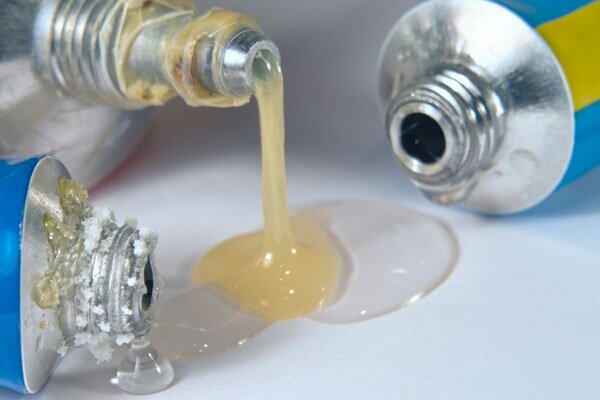
عملية الربط اللاصق خطوة بخطوة
الحصول على الترابط اللاصق بشكل صحيح يعني اتباع كل خطوة بعناية. إذا أخطأت خطوة واحدة، فقد تفشل الرابطة. إليك كيفية القيام بذلك بشكل صحيح.
الخطوة 1: إعداد السطح
يجب أن يكون سطح الربط نظيفًا وجاهزًا. يمكن أن يؤدي الغبار أو الزيت أو الصدأ أو الرطوبة إلى إضعاف الرابطة. ابدأ بالتنظيف بالمذيبات أو الصابون والماء.
للحصول على قبضة أفضل، قم بتخشين السطح باستخدام الصنفرةأو التفجير أو المعالجة الكيميائية. يساعد ذلك على التصاق المادة اللاصقة بشكل أكثر أمانًا عن طريق زيادة مساحة السطح.
الخطوة 2: اختيار المادة اللاصقة
اختر المادة اللاصقة المناسبة للمهمة. فكّر في المواد التي تقوم بربطها، ومدى قوة الوصلة التي يجب أن تكون، والبيئة التي ستواجهها، مثل الحرارة أو البرودة أو الرطوبة.
تعمل بعض المواد اللاصقة بشكل أفضل مع المواد البلاستيكية، في حين أن البعض الآخر مصنوع للمعادن أو الزجاج. تحقق دائمًا من ورقة بيانات المنتج أو قم بإجراء اختبار صغير قبل الاستخدام الكامل.
الخطوة 3: تطبيق المادة اللاصقة
ضع المادة اللاصقة بالتساوي على السطح. يمكنك استخدام الفرشاة أو الأسطوانة أو زجاجة الضغط أو الرذاذ أو الموزع حسب النوع والكمية المطلوبة.
الكثير من المادة اللاصقة يمكن أن يتسبب في حدوث فيضان. القليل جداً يمكن أن يترك فجوات. حاول إنشاء طبقة رقيقة ومتساوية تغطي منطقة اللصق بالكامل.
الخطوة 4: تزاوج الأسطح
قم بربط الجزأين معاً بينما لا تزال المادة اللاصقة قابلة للتطبيق. قم بمحاذاة الجزأين بعناية. يمكن أن يؤثر أي اختلال في المحاذاة على قوة الرابطة ومظهرها.
قم بالضغط الخفيف لتثبيت الأجزاء في مكانها. يساعد ذلك على نشر المادة اللاصقة وإزالة الهواء المحبوس.
الخطوة 5: المعالجة
المعالجة هي عندما تتصلب المادة اللاصقة وتشكل رابطة. يمكن أن يستغرق ذلك من دقائق إلى ساعات، حسب نوع المادة اللاصقة ودرجة الحرارة.
تعالج بعض المواد اللاصقة في درجة حرارة الغرفة. والبعض الآخر يحتاج إلى حرارة أو ضوء أو رطوبة. لا تحرك الأجزاء خلال هذا الوقت، وإلا فقد تضعف الوصلة.
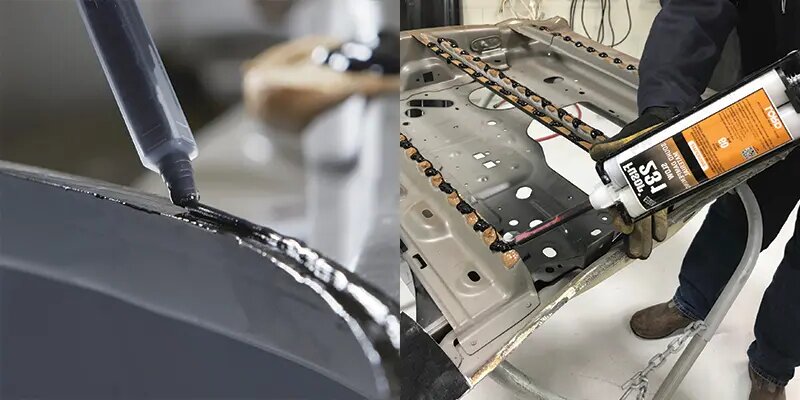
مزايا الربط اللاصق
يوفر الربط اللاصق مزايا لا يمكن أن تضاهيها طرق الربط الأخرى. فهو يدعم كلاً من الوظيفة والتصميم، خاصةً في المنتجات الحديثة المصنوعة من مواد مختلطة.
توزيع الإجهاد المتساوي
توزع المواد اللاصقة الضغط على مساحة واسعة، وليس فقط في نقاط قليلة. وهذا يساعد على تقليل نقاط الضعف ويمنع تكوّن الشقوق. يتم تقاسم الحمل بشكل متساوٍ، مما يحسن من القوة والمتانة على المدى الطويل.
ربط المواد الخفيفة الوزن
العديد من المواد اللاصقة أخف بكثير من البراغي أو البراغي أو اللحامات. وهذا مفيد في صناعات مثل السيارات أو الفضاء، حيث يكون تقليل الوزن أمرًا مهمًا. تتيح لك المواد اللاصقة أيضًا ربط المواد الرقيقة دون إضافة وزن إضافي أو حفر ثقوب.
مرونة التصميم وجمالياته
تتيح المواد اللاصقة تصميمات أكثر سلاسة ونظافة. لا تحتاج إلى ثقوب, مهمات الربطأو علامات اللحام. يساعد ذلك على إنشاء منتجات أنيقة بدون طبقات مرئية. كما أنه يجعل من السهل ربط الأسطح المنحنية أو غير المنتظمة أو التي يصعب الوصول إليها.
القيود والتحديات
بينما يوفر الربط اللاصق العديد من الفوائد، إلا أنه ليس مثاليًا. قد تؤثر بعض القيود على ما إذا كانت هذه الطريقة مناسبة لتطبيقك أم لا.
سعة التحميل
قد لا تتعامل المواد اللاصقة مع الأحمال العالية مثل اللحام أو المثبتات الميكانيكية. في الاستخدامات الشاقة، يمكن أن تفشل الوصلات اللاصقة إذا تم تحميلها بأحمال زائدة أو تم دعمها بشكل غير صحيح. ولضمان السلامة، تستخدم العديد من التصميمات الربط اللاصق مع المسامير أو البراغي.
المقاومة البيئية
بعض المواد اللاصقة لا تتحمل الحرارة أو البرودة أو الرطوبة. يمكن أن يؤدي التعرض لأشعة الشمس أو المواد الكيميائية أو الطقس إلى انهيار الرابطة. تُصنع مواد لاصقة خاصة للبيئات القاسية، ولكنها قد تكلف أكثر أو تحتاج إلى خطوات إضافية أثناء الربط.
المتانة على المدى الطويل والشيخوخة
بمرور الوقت، يمكن أن تجف المواد اللاصقة أو تتقلص أو تفقد قوتها. وتعمل الحرارة والأشعة فوق البنفسجية على تسريع ذلك. يلزم إجراء فحص منتظم للأجزاء الملتصقة في الاستخدام طويل الأجل. يساعد استخدام المادة اللاصقة المناسبة ومعالجتها بشكل صحيح على تحسين مقاومة التقادم.
العوامل المؤثرة على قوة الرابطة
تعتمد الرابطة اللاصقة القوية على العديد من التفاصيل الصغيرة. إذا كان أي جزء من العملية معطلاً، فقد تفشل الرابطة في وقت أقرب مما هو متوقع.
خشونة السطح
يلعب ملمس السطح دورًا مهمًا. يساعد السطح الخشن قليلاً على تماسك المادة اللاصقة بشكل أفضل. ناعم جداً، وقد لا تلتصق المادة اللاصقة جيداً. خشن للغاية، وقد لا ينتشر بشكل متساوٍ. وغالباً ما يعطي الصنفرة الخفيفة أو التفجير أفضل النتائج.
طريقة التطبيق
طريقة وضع المادة اللاصقة مهمة. يمكن للطلاء غير المتساوي أو الهواء المحبوس أو الكثير من الغراء أن يضعف الرابطة. ويساعد استخدام الأداة المناسبة - مثل الفرشاة أو الفوهة أو الأسطوانة - في الحفاظ على الطبقة ناعمة ومتسقة.
الظروف البيئية
تؤثر درجة الحرارة والرطوبة على كيفية علاج المادة اللاصقة. إذا كانت باردة جدًا أو رطبة جدًا، فقد تتباطأ المعالجة أو تتوقف تمامًا. اتبع دائمًا ظروف العمل الموصى بها للمادة اللاصقة. قم بتخزين المواد بشكل صحيح لتجنب المشاكل حتى قبل أن يبدأ الربط.
توافق المواد
لا تلتصق كل المواد اللاصقة بكل المواد. تحتاج بعض المواد البلاستيكية أو المطاطية أو المعدنية إلى معالجات سطحية أو مواد أولية خاصة. تحقق من البيانات الفنية للمادة اللاصقة للتأكد من أنها مصنوعة لموادك. إجراء اختبار سريع يمكن أن يوفر الوقت والمال لاحقاً.
مقارنة الربط اللاصق مع طرق الربط الأخرى
إليك مقارنة سريعة جنبًا إلى جنب بين الربط اللاصق واللحام والمثبتات الميكانيكية:
| الميزة | الربط اللاصق | لحام | مثبتات ميكانيكية |
|---|---|---|---|
| الحرارة المطلوبة | لا يوجد | نعم | لا يوجد |
| تأثير الوزن | منخفض (خفيف الوزن) | متوسط إلى مرتفع | يضيف وزناً إضافياً |
| الأضرار السطحية | لا يوجد | نعم (يذوب أو يحرق المواد) | نعم (ثقوب أو تشوه) |
| مظهر | لمسة نهائية نظيفة وناعمة | درزات مرئية | رؤوس أو براغي مرئية |
| توزيع الإجهاد | حتى عبر المنطقة المستعبدة | مركزة في اللحامات | مركزة في نقاط التثبيت |
| توافق المواد | يربط المواد غير المتشابهة بسهولة | غالبًا ما تقتصر على المعادن المتشابهة | يعمل مع معظم المواد |
| تكلفة المعدات | منخفضة إلى متوسطة | عالية (أدوات خاصة، تدريب) | منخفضة إلى متوسطة |
| إعادة العمل أو التفكيك | يصعب تفكيكها بشكل نظيف | صعب جداً | سهل الفك والتركيب |
| سرعة التطبيق | معتدل (يحتاج إلى وقت معالجة) | سريع للمشغلين المهرة | سريع وسهل |
| أفضل حالة استخدام | المواد الرقيقة أو المختلطة أو الحساسة | وصلات معدنية عالية القوة | أجزاء قابلة للإزالة أو التعديل |
حالات الاستخدام الخاصة بالصناعة
يُستخدم الربط اللاصق على نطاق واسع في مختلف الصناعات. فهو يساعد على تلبية الاحتياجات المختلفة - من القوة وتوفير الوزن إلى المظهر والسلامة.
السيارات والفضاء
في السيارات والطائرات، تساعد المواد اللاصقة على خفض الوزن دون التخلي عن القوة. تعمل الأجزاء الأخف وزنًا على تحسين كفاءة استهلاك الوقود. تربط المواد اللاصقة أيضاً المواد غير المتشابهة مثل المعدن بالبلاستيك أو ألياف الكربون. كما أنها تقلل من الضوضاء والاهتزازات، مما يحسن من الراحة والأداء.
الالكترونيات والسلع الاستهلاكية
تعمل المواد اللاصقة على تثبيت المكونات في الهواتف والأجهزة اللوحية والأجهزة دون إضافة حجم كبير. فهي تساعد على عزل الغبار والرطوبة. كما أنها تسمح بتصميمات أنيقة بدون براغي أو مشابك تظهر من الخارج.
الأجهزة الطبية والتعبئة والتغليف
في الأدوات الطبية، تقلل المواد اللاصقة من الحاجة إلى المثبتات المعدنية، مما يجعل العناصر أخف وزنًا وأكثر أمانًا. بالنسبة للتغليف، تساعد المواد اللاصقة على إغلاق المواد الغذائية والأدوية ومنتجات العناية الشخصية بسرعة ونظافة. كما أنها تدعم التصميمات المقاومة للعبث وسهلة الفتح.
خاتمة
الربط اللاصق هو عملية تستخدم مواد تشبه الغراء لربط الأجزاء بدون حرارة أو مثبتات. وهي تعمل من خلال تشكيل وصلات قوية من خلال التماسك السطحي أو التفاعلات الكيميائية أو المزج الجزيئي. هذه الطريقة نظيفة وتدعم العديد من المواد وتساعد على توزيع الضغط بالتساوي عبر الوصلات.
هل تحتاج إلى مساعدة في اختيار طريقة الربط المناسبة لمشروعك؟ أرسل لنا رسوماتك أو تفاصيل الجزء الخاص بك-سنساعدك في إيجاد حل سريع وموثوق.
مهلا، أنا كيفن لي

على مدى السنوات العشر الماضية، كنت منغمسًا في أشكال مختلفة من تصنيع الصفائح المعدنية، وشاركت رؤى رائعة هنا من تجاربي عبر ورش العمل المتنوعة.
ابقى على تواصل

كيفن لي
لدي أكثر من عشر سنوات من الخبرة المهنية في تصنيع الصفائح المعدنية، وتخصصت في القطع بالليزر، والثني، واللحام، وتقنيات معالجة الأسطح. كمدير فني في شنغن، أنا ملتزم بحل تحديات التصنيع المعقدة ودفع الابتكار والجودة في كل مشروع.

